Simply put, plants really only need two things to live: water and light. But when it comes to bringing your plants indoors, you may need to review (and reconsider) the types of lights, natural and artificial, that are in your home.
Depending on the types of plants you’ve chosen, there are certain grow lights that may fit your indoor greenhouse best, such as: incandescent, fluorescent, T-5, HID, and LED. While access to sunlight may work for some plants, using artificial light is best for controlling the light output on your own schedule.
Adding one more thing to think about for your indoor greenhouse may sound daunting, but I promise, it won’t be much of a hassle after the initial decision making. Once you’ve got yourself set up with a reliable light source, you’re set!
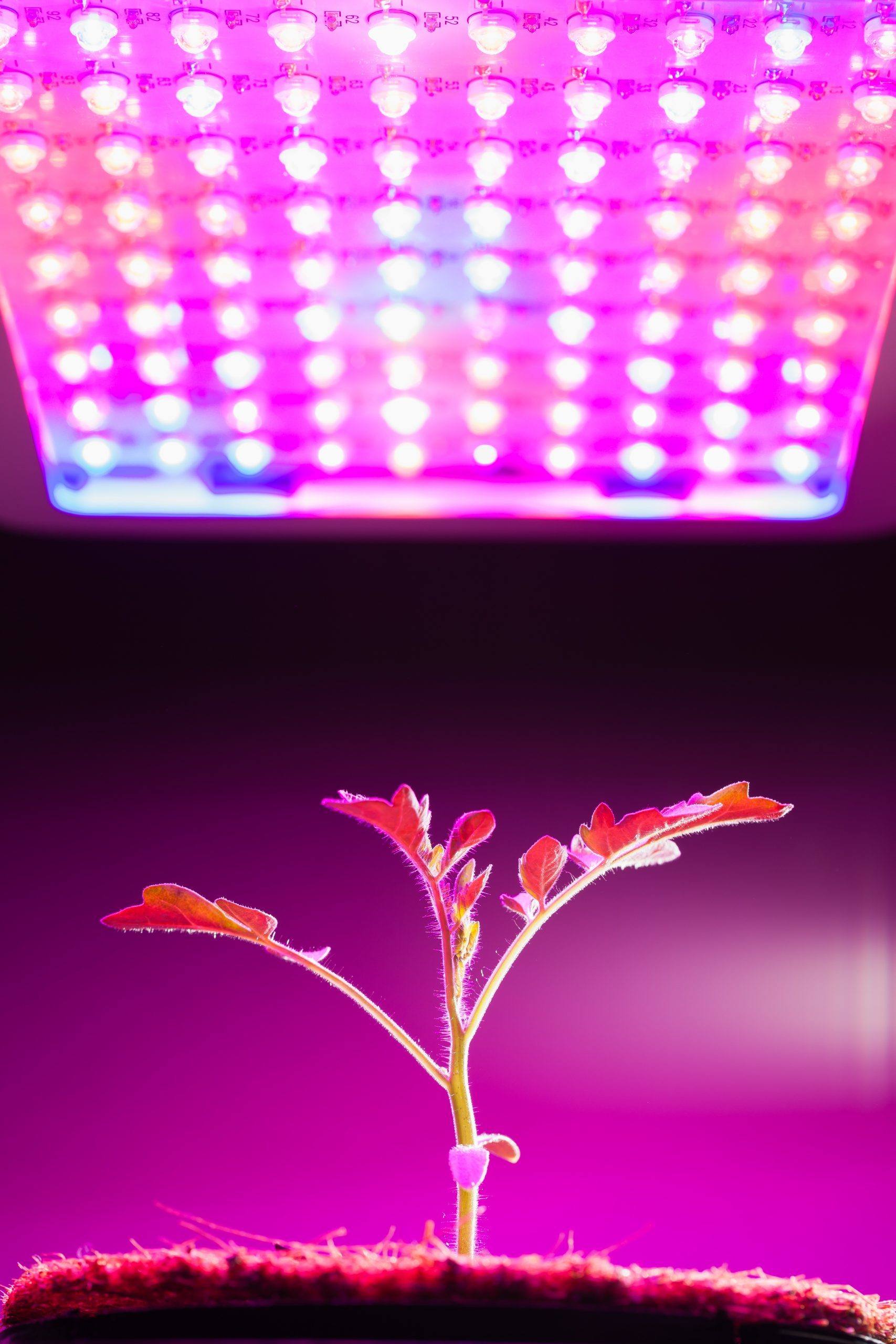
Why do I need grow lights for my indoor greenhouse?
Most indoor greenhouses use grow lights because they can be used in various situations, making it an easy choice for some gardeners.
For example, you can use a simple grow light in an office with no windows for an indoor greenhouse there! If you’d prefer to utilize your basement for an indoor greenhouse, then you can bring in some light sources with grow lights. Do your plants just look better in a part of the house with little to no windows?
You don’t have to worry about access to sunlight with grow lights, just access to a plug.
You can also experiment better with artificial light. If you find that your plants are doing poorly with a grow light, you can always adjust the settings or physically move the grow light farther away from or even closer to the plants. Artificial lights do their best to copy the sun’s natural beams, but sometimes they need to be checked on to see if they are at the right level.
Grow lights allow for better control of light access as well as heat. If you’re someone who wants to have a tight-running indoor greenhouse with controllable aspects, then grow lights will be a great option for you.
A downside to using grow lights as opposed to sunlight is the cost. Using the sun is free, but you will have to keep in mind that using artificial lights can be costly. It would be best to sit down and figure out how much you’re willing to spend on electricity to run the grow lights.
This being said, grow lights can be cost-efficient, depending on the type you get. The good thing about choosing your own grow lights is that you have many choices for differing situations.
Sunlight for your indoor greenhouse
A natural light source (ie. the sun) for indoor greenhouses is, of course, good for your plants. After all, nothing can 100% replace the sun’s natural output of light. In fact, in the sun’s rays, the entire light spectrum is made available to plants, making it easier for plants to absorb what they need to in order to best grow.
If you find that relying on sunlight works for you, then great! However, you may find that the sun isn’t always reliable. Unless you’re prepared for cloudy or rainy days, your plants won’t always have access to light when they need it.
To begin, let’s make sure we’re on the same page. What does an indoor greenhouse entail?
Building your indoor greenhouse
When you think of the word “greenhouse,” what comes to mind? Is it a glass windowpane building? A small row of plants underneath a row of lights? Big bags of soil and dirt? Do you think of green rubber boots and dirty overalls? The truth is, greenhouses can vary in their look, and you can put just as much or as little detail into it as you want.
We will be covering indoor greenhouses specifically in this article, so let’s peruse some ideas that you might like (or already have!).
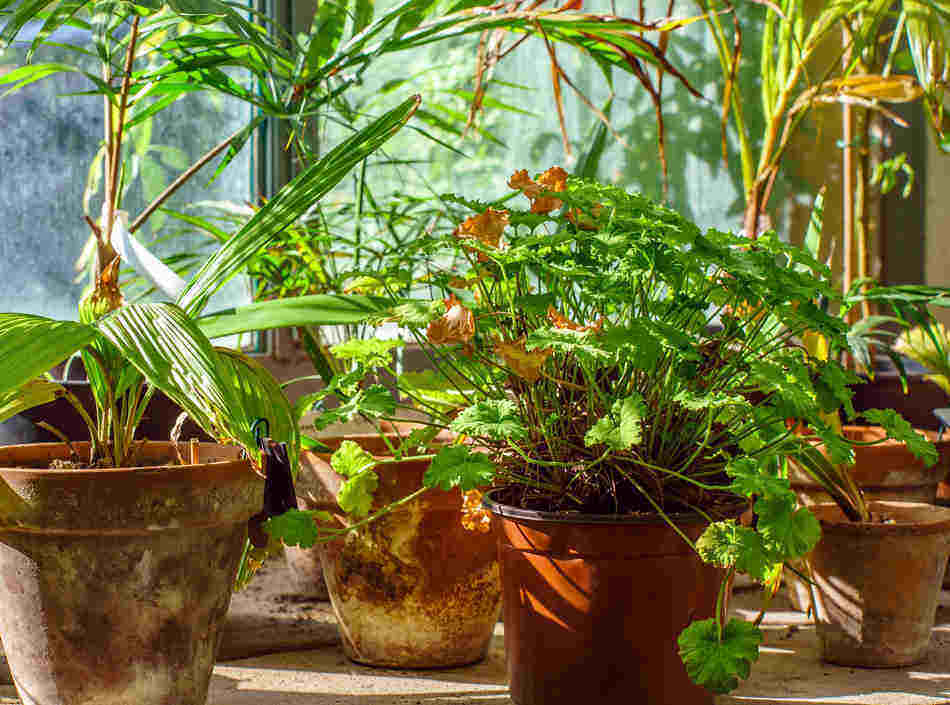
Examples of DIY indoor greenhouses
If you’re looking for a greenhouse that allows for more plants but takes up less room, you can utilize old wooden shelves. If you’ve got an area in mind, but little budget, you can easily put one together using plastic clear cups or even a plastic cover to create an enclosed space. You know those plastic containers that hold cupcakes? That would even work too – eat the cupcakes first, however.
Indoor greenhouses don’t need to be difficult to buy or build and making one yourself is just the beginning to your adventure with your plants.
Can indoor greenhouses work anywhere?
Indoor greenhouses work for people with one-bedroom apartments and families with multiple rooms to spread out; they will typically work in any living situation.
That being said, be aware of where you place your indoor greenhouse. Do you have pets who may get too curious? Or kids who are overly eager to peek in on their plants? Make sure that your set up for your indoor greenhouse is up and away or in a place that is less accessible from the well-intentioned but potentially messy individuals.
Family-friendly
This being said, indoor greenhouses are great for families looking for other methods of learning as well as family time. Not only will this project teach kids a new hobby, but it will also foster a new love for taking care of another living thing. Letting your children experience growing a plant will allow them to try a new skill and leave them with lasting memories.
Lighting situation
Once you’ve decided how your indoor greenhouse will look and where it will be, lighting is the next (and possibly most important) decision.
You may be thinking that placing your indoor greenhouse in a window with access to sunlight may be enough, but there are a few more things to consider before you do this.
What exactly is a “grow light?”
When the term “grow light” is used, it mostly refers to a plug-in lamp or bulb. You may recognize some of the types of grow lights out there, as some of them are used in everyday lamps or ceiling fans. Depending on your budget, indoor greenhouse setup, or overall goal in mind for your plants, these decisions may affect which type of grow light you choose to go with.
Incandescents
First, there are incandescent grow lights. You’ve most likely heard of incandescents before, but if not, they are a lightbulb built with a wired filament on the inside that glows when heated.
This being said, when turned on, they can be quite hot. These are the types of bulbs that require a brief moment to cool down before removal.
Inexpensive vs. Cost-efficient
They are generally inexpensive to buy at the store or online; however, this is not to be confused with cost-efficient. Upon buying incandescent bulbs at the store, yes, they are low cost.
However, energy cost is another important factor. Energy cost has to do with how much the bulbs are costing you to use with your electricity every month.
For example, incandescent lights will usually output around 1,000 hours of light before they need to be replaced. Your daily cost of running incandescent light bulbs can be less than a dollar, but the yearly cost could be too much for your budget.
Some people have found that they prefer incandescent bulbs with their plants and are comfortable with the energy cost from them. It’s entirely up to the gardener on what they prefer.
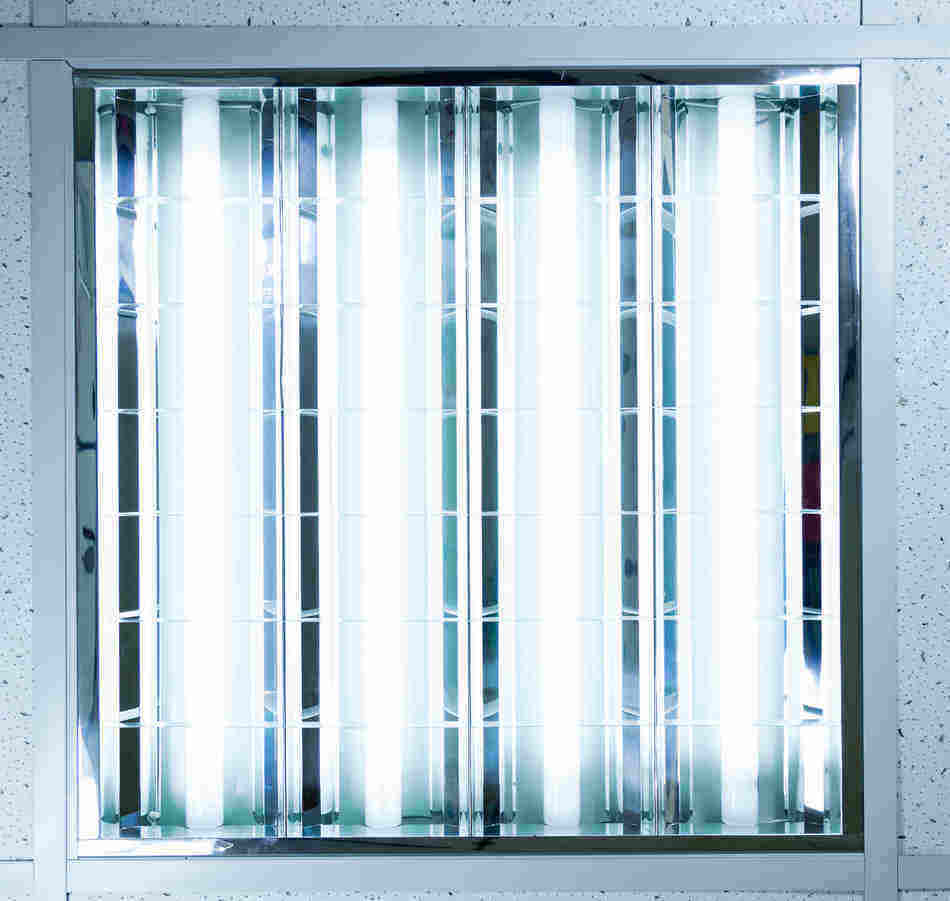
Fluorescents
There are also fluorescent lights; another term you may recognize. It produces little to no heat emittance as it creates light using a mixture of gas. Because of how they emit light, fluorescent bulbs take a few moments to achieve their full level of brightness.
More expensive, but more energy efficient
Compared to incandescents, fluorescent lights are more expensive in stores. However, fluorescents are able to produce light for 20,000 hours of light – that’s more than a year’s worth of hours!
They are also energy efficient in that they cost less in your electricity bill to keep them running on a daily basis. Since they are not using very much electricity to create light, that means less money going into electricity for these bulbs.
Blue and red spectrums
Also important to note, fluorescent lights are available to buy in blue and red spectrums. We’ll dive into the importance of the color spectrum later, but depending on the plants you want to grow, you may need to be aware of bulbs that can emit certain colors.
Possible issues with fluorescents
There are a couple of downsides to using fluorescent lights, however. Fluorescents have a harder time lighting in colder temperatures, and they don’t dim very smoothly. Again, depending on your specific needs, these issues may not be a problem for you, but they may for someone else!
T-5 fluorescents
Next, you can get T-5 grow lights; these bulbs put out some serious light. They are technically fluorescent lights as well, but they are a newer product.
They are similar to other fluorescents in that they can also be physically closer to plants with their low-heat emittance, but they differ in the cost of light output that you can get from them.
What makes them different from normal fluorescents
They are more cost-efficient for the number of hours it runs and strength of light that it produces. They do run for the same amount of time as other fluorescent lights, which is around 20,000 hours.
Another distinguishing trait between normal fluorescents and T-5 lights are the shape. You can get fluorescents in a bulb shape, but with T-5 lights, they are in a tube shape. You may find that having a long tubular light hanging above your plants works better, and T-5 lights are just the choice for that.
Things to consider with T-5 lights
That being said, you cannot place a T-5 light in any fixture. You will need to buy a high light output fixture specifically for this grow light. As with every other bulb on this list, the initial costs differ, but remember that a fixture must be bought with this light source.
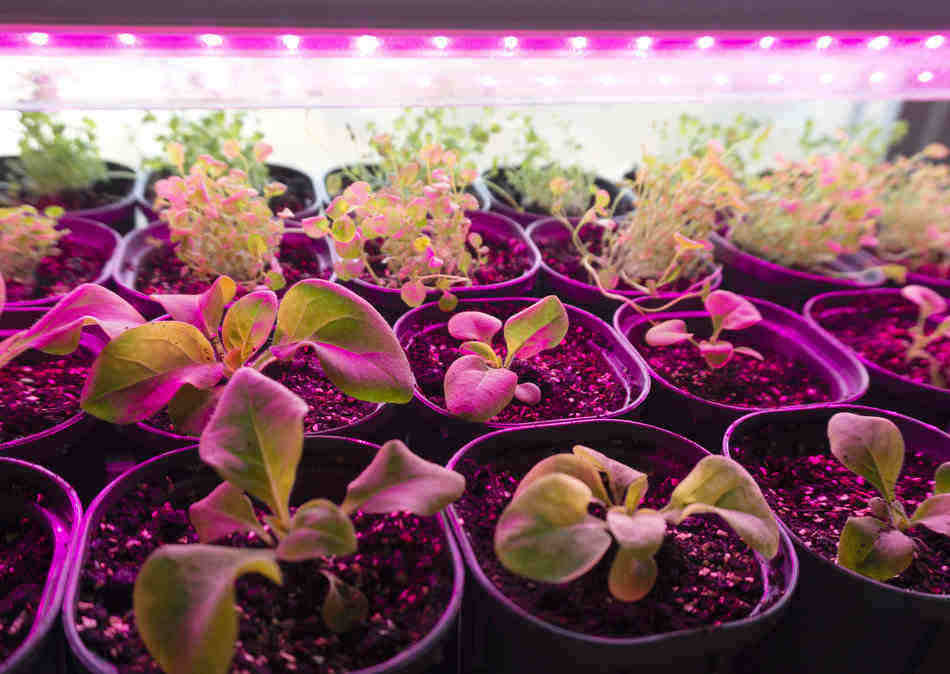
High Intensity Discharge lights
High Intensity Discharge lights, or HIDs, are another type of grow light that could work for your greenhouse.
Compared to the other grow lights previously mentioned, HID lights are typically best for specific scenarios.
HID lighting situations
Originally designed for non-domestic application, HID lights were put to use in warehouses or outside buildings for industrial and commercial purposes.
Since they have a very high heat emittance when turned on, HID lights need to be placed up and away from their lighting targets. Because of this, they will be able to light more plants from where they are stationed.
HIDs in the home
You may be thinking that HIDs aren’t for you if they weren’t made for home use, but you can make HIDs work for your indoor greenhouse.
In this case, you will still want to make sure that you’re able to put your HID lights in a place that will be far enough away from the plants so that the heat does not affect them as much. If you have the space for this, then go for it! Tall ceilings will most certainly help.
New kid on the block: LEDs
While not entirely new to everyone, LEDs are still a relatively new bulb design. Built to output more light, save you money, and be cool to the touch, LEDs are one of the most popular grow lights out there.
While the light bulbs listed above last for more than a year, LEDs can actually last for 11 years before you need to replace them. It’s almost overwhelming to think about just how much light that is!
List of pros
When you figure in just how much light LEDs can produce and for how long, the next question would be: is this cost efficient as well? Yes. Yes it is. To run an LED light, it will typically cost you less than a penny to run it DAILY, leaving more electricity for other things! Or, you know, saving money.
Color spectrums available
Much like fluorescents, LEDs can be purchased in red and blue depending on what you need. Believe it or not, some plants actually prefer a certain part of the color spectrum included with their light intake. For LEDs, this fact makes them even more useful.
Which grow light do I need?
You’re probably thinking: Great, I have all this information at my disposal, but where do I go from here? Good question. My question back to you is: what type of plants will you be tending to?
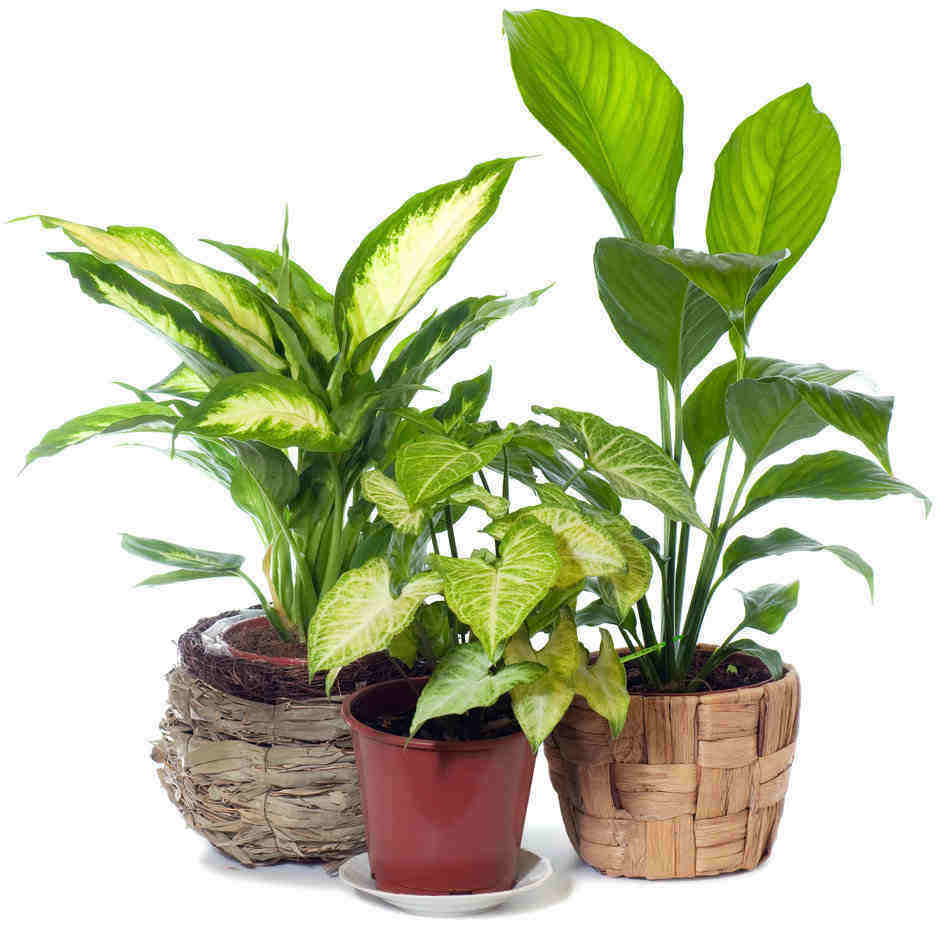
Low-light plants
If you’re considering plants that don’t mind heat but would love a little light, incandescents are the bulb for you.
Remember that incandescents, while a light source, don’t put out at much light as other artificial lights.
Such plants are ones that don’t require a whole lot of detailed care; different types of ivy are among these plants. For example, pothos plants can make it with a low-light setting. Vines, ferns, & dracaenas can also do well with incandescent lights.
Wide area of vegetables or flowers
Have a whole room or corner dedicated to your indoor greenhouse? HIDs will work for this!
As I said earlier, HIDs need to be a considerable distance away from the plants, as they are quite hot. Be sure to take measurements of your intended greenhouse area to make sure that the plants will not get overheated.
HIDs are particularly good for bigger greenhouses of vegetables and flowers because they cover quite a bit of ground. Their light output makes up for the heat emittance as well.
Blue spectrum? What’s that?
Remember when I mentioned the color spectrum options for fluorescent and LED lights? I know it feels like forever ago now, but I’m finally talking about it!
Different plants like various parts of the color spectrum; this is why the sun does the best job for enriching plants with light. The sun’s rays contain all parts of the color spectrum, so plants can pick what they need from it.
Artificial lighting can’t replace the sun in this way completely, but there are some grow lights out there that can really hit the spot for some plants.
Bushy plant goals
For example, plants that need to reach their bushy potential, blue light is best!
This is why grow lights such as incandescents may not be the best choice for your bushy plants, as there are no options to buy these lights in other color spectrums. Instead, fluorescents, T-5 tubes, or LED lights would be good options for this need.
Plants that would fall under this category include leafy types such as evergreen, dracaenas, ferns, and ficus plants.
So many options!
I recognize that giving you three options may not be entirely helpful in narrowing down your search for the best lighting, but if you’re stuck deciding, look back at what I said about each grow lights’ cost efficiency.
Like a lot of things in life, it may just come down to the issue of money and budgeting. Energy cost should be a deciding factor anyways, but it could be just the push you need to decide.
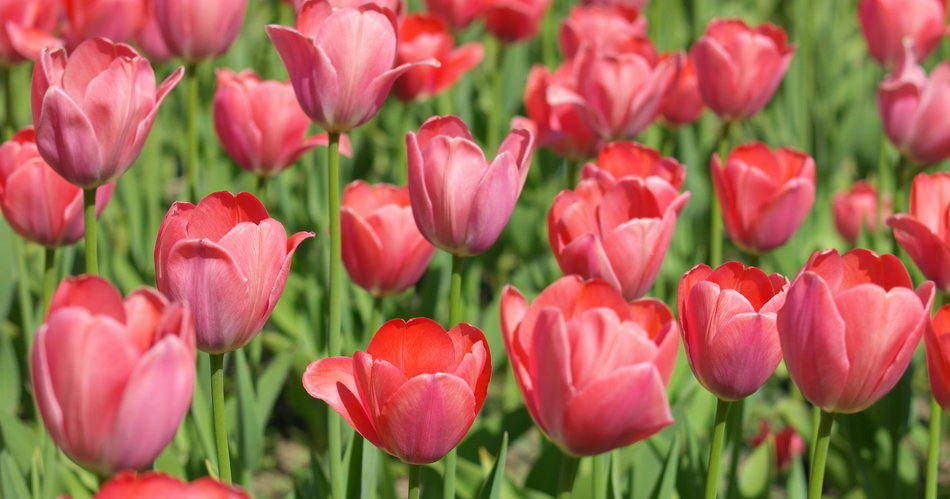
Flowering is a must
Similarly, if more flowering is an outcome you’d like from your choice of lighting, bulbs in the red light spectrum are best for this. These types of plants are different from the bushy kind simply because they have buds.
Flowering plants can have very leafy parts to it, but their main goal is to produce their beautiful flowers. In this case, using bulbs emitting red on the color spectrum will encourage your plants to flower more.
Plants that could benefit from this type of color are any plants that produce flowering, such as tulips, geraniums, or lavender.
Experiment!
Overall, the choice is up to you as to what types of grow lights you may want or need. This freedom of choice may invigorate you or overwhelm you (I hope the latter is not the case), but I hope that you now have a better understanding of what your indoor greenhouse needs.
Related Questions
Do I need grow lights in my greenhouse?
If you want to control the amount of light that your plants get, then I would look into getting grow lights for your greenhouse. Setting a light schedule is easy with artificial lighting, unlike the sun, which may or may not give your plants the light they need.
What is the best lighting for my greenhouse?
Different lighting serves different purposes for your plants. If you’re looking for a general lighting source, incandescents may work. However, if you want certain results from your plants, you may want to look into LEDs or fluorescents.
Can you have a greenhouse indoors?
An indoor greenhouse is most certainly an option for many gardeners. Whether you have access to a window or not, indoor greenhouses can work inside a home or office. Grow lights are most commonly used to replace sunlight, and there are many affordable lights to choose from.
